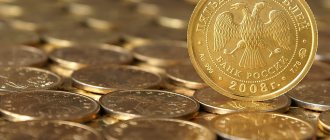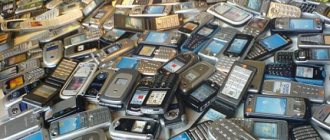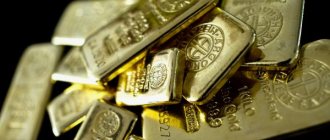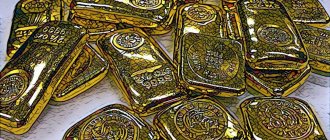30.09.2020
Each of us probably has paper money in our pocket or wallet. How much can they really cost? In response to this question, a number is presented. However, no matter how many banknotes you have in your hands, they are just pieces of paper. And its value is determined by government promises and our belief that these promises can provide it with the declared purchasing power. This is the essence of fiat currency.
The total GDP of all world countries in 2021 reached $127 trillion. The lifeblood of the gigantic, world-wide organism called the global economy is a huge mass of unbacked fiat currency.
.
Market participants simply agreed on the value of paper money, and compliance with this agreement rests only on trust
in the states or state associations that issue banknotes.
Well, according to the definition of representatives of the Polish Central Bank, fiat currency does not have collateral in the form of real material property, such as precious metals.
Its value is supported by an exclusive monopoly on the status of the only legally permitted means of payment in the territory of a country or group of countries, as well as trust in the issuer. To maintain the demand for paper money, the government collects taxes.
Most academic definitions of fiat money include a key role for government authorities. This is quite natural, since the effective performance of its functions by paper money is supported only by the mechanisms of political power
.
The emergence of cryptocurrency can shake the established foundations. Bitcoin itself has some similarities with fiat money without material backing. However, it is no longer issued by the state, but by a diversified computer complex that maintains operations through blockchain technologies.
What is commodity money?
Although fiat currency is not a recent invention, it began to circulate fully throughout the world only in the middle of the 20th century. Previously, reference goods were often used as a means of payment. They served as the basis for the formation of market prices and were called commodity currency.
At the dawn of mankind and for a long time afterwards, barter dominated the market. Some goods were simply exchanged for others. The hunter paid the gunsmith with his catch, the serf paid the feudal lord with his labor and agricultural products, etc. But even then it often happened that one of the parties to the transaction might simply not need the product offered in exchange. There was a need to have a universal equivalent of value—money. Their role was initially played by the most popular goods, which were recognized by everyone as a universal means of payment.
What has not been used as a commodity currency throughout history. These include glass beads, sea shells, spices, cocoa beans, salt, food, etc. Even today, in some African countries, camels and other livestock function as money. In places of military conflicts, cartridges and weapons can now play the same role.
During the development of civilization, precious metals such as gold and silver took over the function of money. At the same time, silver coins or bars were used for daily business transactions, and gold coins for serious, expensive purchases.
The system of bimetallic, gold and silver standards that took shape over thousands of years did not suit all state rulers. Many of them tried to deceive the natural state of affairs and reduced the purity of the precious metal used in money, diluting it with cheap impurities. Such coins carried the same denomination, but had less weight. The competitive struggle between similar metal currencies among themselves lasted for centuries. Each one tried to outwit his neighbor as best he could. People saved high-grade metal money as savings, and used low-grade money to purchase goods and services.
There is even an economic Copernicus-Gresham law that describes the situation. According to it, a less valuable currency always pushes a better one out of the market. That is, inferior money continues to circulate, and valuable money gradually settles in reserves and savings.
Why should money be backed by gold?
The gold standard system operated with great success for many centuries, including nearly two centuries of U.S. history until 1971, when it became the richest country in world history.
In 1971, the chief economist of the US Office of Management and Budget, Arthur Laffer, was asked what he thought about the consequences of Nixon's "closing of the gold window"; Let us recall that this decision effectively put an end to the Bretton Woods agreement, according to which the price of gold was fixed at $35 per ounce. Laffer responded as follows:
"Americans won't have as much fun anymore." And he was right.
But why? Why does the collective mind of today's central bankers, in fact every central banker since 1971, ignore the yellow metal? This may seem strange, but it has always been this way. Back in 1928, in a book called The Intelligent Woman's Guide to Socialism and Capitalism, George Bernard Shaw wrote:
“You have to make a choice... between trusting the natural stability of gold, or trusting the integrity and intelligence of government officials. And with all due respect to these gentlemen, I advise you, as long as the capitalist system exists, choose gold."
The same can be said today. Nothing has changed since then. Ninety years ago, smart women understood this.
To understand why gold works well as a measure of value, you need to understand what characterizes good money. Cryptocurrency fans are rediscovering what economists have always known: the best money is stable money, or more accurately, stable money is money that is stable in value. Bitcoin and its analogues are good for gambling (the rise in popularity of cities like Las Vegas shows great interest in such activities), but they are also poor currencies.
Ideally, a currency should be completely stable in value. A market economy is organized around prices, profits and interest rates. Changes in the value of a currency disrupt this order, creating chaos and bedlam. John Maynard Keynes described this situation in 1923:
“Markets cannot function properly if the money they accept as a stable measure of value is unreliable. Unemployment, the unstable conditions of life of the worker, disappointment in expectations, sudden loss of savings, the excessive enrichment of some people, speculators - all this is largely due to the instability of the measure of value.
In The Scandal of Money, George Gilder updated this statement using the terminology of modern information theory:
“Currency manipulation leads to instability in all market valuations. According to information theory, if a medium sends its own message, it is called noise. Noise in the channel reduces the channel's capacity to transmit accurate information,” he said.
In practice, the ideal information process cannot be achieved, so a more adequate alternative is needed. An adequate alternative is gold: the yellow metal most closely matches the ideal of stability of its value. The fourth US President, James Madison, summed it up succinctly:
“The only adequate guarantee of the stable value of a paper currency is its convertibility into a precious metal (gold), the least volatile and the only universal type of currency.”
The US became one of the most successful countries in world history because people like James Madison understood the importance of gold and stuck to it from 1789-1971.
In that one sentence, Madison touched on some important political truths. One could, of course, argue that, ideally, "smart people" could get together and create a more suitable - that is, more stable - basis for money than gold. However, as you can see, no one does this. Nobody even tried to do this during the last five decades of the dominance of paper money. One reason for this is that they are human: therefore, they are subject to political pressure, but gold is not. This is one reason why, as Madison argued, gold would remain “the only adequate guarantee of the stable value of paper money.”
Related to this is the fact that gold is “the only universal currency.” This is the only item (along with silver) that all people agreed to use as the basis for money; it ensured the functioning of fixed exchange rates between countries, greatly simplifying the processes of trade and investment. Before World War I, most major governments maintained a global gold standard, which was simply the legal codification of the centuries-old practice of using gold and silver coins throughout the world. This system was restored in the 1920s and then in 1944 at Bretton Woods. Humanity has had no problems with global currency systems based on gold.
Contrary to popular belief, most countries today do not have freely floating currencies. According to the International Monetary Fund, about half of all countries actively “peg” their currencies to other currencies, usually to one of the major international currencies such as the dollar or euro. In other words, they have fixed exchange rates. Another 25% of all currencies are “stabilized” against a leading international currency, which remains the benchmark, but exchange rates may fluctuate somewhat. Most modern currencies today are part of currency blocs (dollar or euro), being either in a “pegged” or “stabilized” state. The only significant difference between the euro currency bloc and the previous gold-based global currency bloc is the measure of value: gold or floating paper euro.
Despite the enthusiasm for fixed exchange rates (a form of sound money), no one today is interested in creating a single world currency bloc. It would be possible, for example, to create a global currency bloc around the euro, and the IMF would offer the appropriate infrastructure. The world would then be freed from the difficulties associated with floating currencies. The exchange rate between the dollar and the euro would become fixed, along with the exchange rates between the pound and the euro, the yen and the euro, and other currency pairs.
The reason why this does not happen is simple: no one will trust the European Central Bank (ECB). The fact is that the ECB is subject to political pressure and other factors that do not affect gold. The ECB can also serve as a means of exerting political pressure.
In fact, a similar system already existed in the world. It was called the Bretton Woods Agreement. The British pound, the German mark, the Japanese yen, the French franc and all other world currencies were nominally pegged to the US dollar. The reason all these countries agreed to this arrangement was because the US dollar was pegged to gold at $35 an ounce. When the US currency was untied from gold in 1971, neither country was interested in remaining linked to the dollar and the currencies began to float relative to each other. They are still swimming.
The effectiveness of gold as a measure of stable value is well proven. In fact, it turned out to be much better than one would have expected. What was possible under the gold standard—for example, the extraordinary stability of bond yields in the 19th century—was not achieved under a fiat currency system.
An economy functions stably when currencies have stable values. The best way to ensure the stability of a currency is to peg it to gold. No one has proposed an adequate alternative to gold so far; no one even needs this alternative, since gold has always saved humanity.
Backed currency
The transitional link between commodity and fiat currency was paper money with collateral, which came into use in the 19th century. Since the 18th century, banks and individuals began to operate with bills of exchange and other similar securities, which gave their owner the right to demand from the issuer the fulfillment of certain financial or property obligations. For example, give the bearer a certain amount of gold or pay a specified amount in money. Depending on the reliability and solvency of the issuer, such securities could be circulated as banknotes. It was they who became the first secured money.
The value of such a currency was determined by whether the issuer owned a sufficient amount of precious metal to fulfill all its obligations. If a bank or entrepreneur went bankrupt, then the bill of exchange turned from money into a useless piece of paper.
United States bills
Further transformation of the backed currency can be observed in the example of the United States, where in some newly annexed states they began to issue something between banknotes and modern bonds. These were negotiable papers similar to bank notes that were used to pay taxes. In addition, the issuer promised to repurchase them after a specific period with the payment of a fixed interest income.
Now in the United States there is a constitutional ban on the issuance of such papers by individual states. They were last issued by the Federal Reserve in 1934, and are still legal means of payment, although they have more collector's value.
From the very beginning, such bills were fully secured. If a banking organization owned $1 million in gold, then it was allowed to issue similar banknotes in the same volume. But this practice soon took on the characteristics of typical schemes used by the Federal Reserve, in which securities are only partially backed. That is, paper money was subject to free exchange for precious metals, but if everyone decided to do this at one moment, then the available gold backing would not be enough. For most states, the task of fully providing the national currency with gold and other assets is impossible. Gold and foreign exchange reserves are usually only enough to stabilize money exchange rates.
Chapter 2. How modern money is secured
What is “secured money”?
The mass of banknotes (paper or electronic) stamped by the world's moneylenders over the past decades is measured in truly astronomical numbers. As of the end of 2009, according to the US Federal Reserve, the “output” of the US banking system, measured using the indicator “monetary supply M1”
(cash in the form of banknotes + non-cash funds in current accounts and demand deposits) was approaching the level of 1.4 trillion US dollars.
This is the most “liquid” money created by banks. There is also the “monetary aggregate M2” indicator,
which additionally includes non-cash funds in the form of time and savings deposits. This is less “liquid” money, the volume of which was equal to $7.72 trillion. There are also other indicators, for example, “monetary aggregates M3, L,” etc. This is completely virtual money, the liquidity of which is infinitely small compared to cash (“monetary aggregate M0”). Their volumes are so large and growing so quickly that the Fed has stopped publishing data on them so as not to create panic in society and not undermine confidence in the “green” economy.
Until 2006, the M3 indicator (M3 = M2 + certificates of deposit and some other even more derivative and virtual financial instruments denominated in US dollars) was not secret. So, for the period 1960-2005. The M3 money supply increased 34 times!
An attentive reader, having familiarized himself with how the world's moneylenders have begun to trade their “paper” (or “electronic”) products on a global scale, may ask: how do the issuing moneylenders expect to cover their obligations to the whole world? Indeed, in any textbook on money we can read that modern money is the obligations of the issuer to the holder of this money (more precisely, tokens of money). True, in some textbooks it is written that modern money (signs) are not backed by anything. But then it is not clear what obligations issuers may have to sign holders. Let’s try to understand this issue, on which, as it turns out, there is no consensus even among “professional economists.”
In our opinion, money must have security (this is the most important element of any monetary system). Providing money is the creation of conditions that allow money to fulfill its basic functions - primarily a means of exchange and payment.
If there is no security of money, then there is no economic activity (at least one that is based on the exchange of goods). A real collapse is coming.
To understand what is happening with money and the “economy” today, one must keep in mind that the way money is secured has changed compared to those that existed during the era of the classical gold standard of the 19th century or even the gold dollar standard, which existed almost thirty years after the Second World War. world war.
To go beyond the usual ideas about securing money, let's look at the problem in a broad historical context. Humanity knows two main approaches to securing money: a) commodity security; b) non-commodity collateral.
Commodity provision of money
Product supply can be divided into the following main categories:
a) security in the narrow sense
- when the issuer is ready to provide the bearer of banknotes with commodity values at his first request and at a predetermined price;
b) provision in a broad sense
— the presence in the country where the issue of banknotes occurred of a sufficient mass of goods and services that can be exchanged for these banknotes;
c) provision in the broadest sense
- the presence of a sufficient mass of goods and services for exchange throughout the world economy.
Commodity provision in the narrow sense
most often came in the form of gold and other precious metals, which were stored in the issuing bank or treasury.
The issuer, at the first request of the holder of a banknote (banknote, treasury note),
exchanged it for metal at a predetermined parity.
We already talked about the gold standard
as the most striking example of a monetary system based on commodity security in the narrow sense, closest to us in time. The gold standard was beneficial to moneylenders, who concentrated reserves of the yellow metal in their hands and also controlled gold mining. The English economist John Keynes called gold money “a relic of barbarism.” Russian thinkers and public figures of the late 19th century. sharply criticized the plans of the Ministry of Finance headed by S. Yu. Witte to introduce the gold ruble in Russia, and after its introduction in 1897 they demanded the abolition of the gold currency. Among them are S. F. Sharapov, A. D. Nechvolodov, G. V. Butmi. All of them revealed the falsity of the official economic “science”, which proved that gold money is the most perfect. In fact, it was pagan worship of the “golden calf” that enslaved people both economically and spiritually. G.V. Butmi, in particular, wrote: “... when the Judaizing theorists of financial science began to assert the obvious absurdity that all the enormous state property is an insufficient supply of national paper money, and a comparatively insignificant amount of gold - and not their own, but taken for ruinous interest rented from the Jews, secured by the same state property, is sufficient security, then no one remembered the warning words of the Divine Teacher: “Mad and blind! What is greater - gold or the temple consecrating gold? "[1390] The gold currency system imposed on Russia led our country to ruin, huge foreign debt to the Rothschilds and other world moneylenders, and ultimately pushed Russia into the First World War.
Sometimes, as security in New and Contemporary history, individual elements of what Bu were used. First of all, it was land.
For example, immediately after the revolution of 1789, the French authorities began issuing so-called assignats
provided with land plots. True, the experiment with such paper money did not last long, since a lot of assignats were issued, and with a fixed price for land, they began to lose confidence on the part of citizens, and their purchasing power began to quickly fall.
By the way, today, in the context of the financial crisis, discussions have again revived regarding the need to return to money that would have commodity backing in the narrow sense. Moreover, projects of such monetary systems provide for the widest range of goods that could be used by issuing institutions: from traditional gold to oil and even electrical energy (the so-called “energy money”).
“Basket” security
is also offered i.e. collateral that involves the use of a combination of a number of liquid goods (“basket”): oil, non-ferrous metals, wheat, etc.
However, today there are practically no monetary systems in the world that would be based on commodity supply in the narrow sense of the word. Although some central banks and treasuries (ministries of finance) may have significant reserves of commodity valuables - gold, other precious metals (and in some cases also precious stones), they do not exchange these valuables for the banknotes they issue (banknotes, coin change, treasury notes). tickets). This exchange was temporarily stopped during the First World War, and finally in the 30s of the last century. After World War II, only U.S. dollars claimed by the monetary authorities of other countries could be exchanged for monetary gold from U.S. Treasury reserves (for individuals and businesses, such exchanges of U.S. dollars were discontinued in 1934 and have never been reinstated). Long ago, the owners of the printing press in America prudently “smeared out” on green pieces of paper all sorts of hints that these pieces of paper were backed by yellow metal and that the owners promised to exchange dollars for gold. They also wisely transferred gold from the balance sheets of the Federal Reserve banks to the balance sheet of the US Treasury Department in 1934 (receiving so-called “gold certificates” in exchange).
The Swiss franc retained its formal connection with gold for the longest time. The Swiss constitution stipulated that paper francs must be backed by at least 40% gold (this, however, did not mean that the country's central bank was obliged to exchange banknotes for gold; such exchange was stopped in the 1930s). Only ten years ago, under pressure from the United States, Swiss legislators repealed this constitutional provision, after which a significant part of the country's gold reserves was sold off.
In the USSR, until its last days, there was a formal (declarative) connection between paper money and gold: on banknotes and treasury notes there was a record that these banknotes were backed by the state’s gold reserves. At the same time, none of the mere mortals knew how much the ruble was backed by gold, because there was no open data either on the amount of paper money in circulation or on the volume of the state’s gold reserves. Just like in Switzerland, in the Soviet Union it was impossible to exchange paper money for gold. In the Russian Federation, on paper notes (banknotes), the record of backing the ruble with gold has disappeared.
So, there was a gradual evolution of money:
1) full-fledged commodity money (their most perfect form is gold money in the form of bars and coins);
2) representative money, i.e. paper money that could be exchanged for monetary goods (primarily gold);
3) fiat money, which for a long time had a paper form, and in the near future may acquire an electronic form (records on magnetic storage media).
Fiat money
Proponents of fiat money
it is believed that such money also has security -
in a broad sense.
Fiat money has been used for a long time, when the authorities did not have enough real money. The introduction of fiat money into circulation occurred especially often during periods of war, which led to the complete depletion of the treasury. Fiat money first appeared in China in the 7th century (although some researchers believe that limited exchange of such money for gold and silver still existed).
Outside China, fiat paper money began to be used in the North American colonies in the late 17th and early 18th centuries. (they were called “colonial receipts”).
The first large-scale use of fiat paper money in Europe took place almost three centuries ago in France.
We are talking about France during the time of the young King Louis XV (early 18th century), when the treasury was empty and there was no way to count on loans. The regent of the child monarch, Philip of Orleans, invited the Scotsman John Law, who proposed to begin issuing paper money not backed by gold. After the approval of his project, Low created a bank (Royal Bank), which began issuing paper money (banknotes), however, at the insistence of the royal ministers, a certain backing of paper notes in gold was maintained. Later, Lowe managed to start issuing banknotes without regard to the gold reserves, and the money supply in circulation increased many times over, while inflation began in the country. It all ended with the collapse of the Royal Bank, Lowe's flight from France and the emergence of a persistent aversion to paper money among the French.
“Greenbacks” are also considered fiat money.
times of the American Civil War. It should be noted that they were issued not by banks, but by the treasury, i.e. were government obligations. They were intended primarily to pay soldiers' salaries and purchase goods for the army. In total in 1862-1863. $450 million worth of such money was issued. Critics of Treasury money emphasize that President Lincoln's experience caused inflation in the country, so the issue of “greenbacks” was discontinued after the war.
Already after A. Lincoln, many times governments resorted to using fiat paper money during periods of war. Each time this caused inflation to one degree or another. This inflation was partly mitigated by the fact that governments “tied up” the excess money supply with bond issues, i.e. obligations of the authorities to pay off their debts with “real” money after the end of the wars.
Many believed and continue to believe that paper (or electronic) fiat money is a very good thing, since it allows one to abandon the accumulation of gold, which the famous English economist John Keynes called “a relic of barbarism.” An argument is often made that the production of full-fledged metal money and its circulation requires a large amount of labor and resources (ore mining and beneficiation, metal smelting, minting, storage costs). Our brilliant Pushkin, a hundred years before Keynes (when London began to actively enforce the gold standard throughout the world), wrote in Eugene Onegin about the possibility of a society existing without gold money:
How does the state get rich?
And how does he live, and why?
He doesn't need gold
When a simple product has.
In Russia before the revolution, a “school of nominalists”
(the most prominent representative is S.F. Sharapov), who opposed the introduction of a gold standard in the country, believed (like Keynes) that a developed society needs paper money that would have fiat purchasing power. At the same time, Russian “nominalists” quite rightly believed that the introduction of paper money required high responsibility and consciousness on the part of the population and the state. To avoid the sad experiences of using paper money in other countries (leading to inflation and complete disruption of monetary circulation), two conditions must be present:
1) strict control over the issue of money by the state;
2) citizens’ trust in the state carrying out the issue.
Thus, Russian “nominalism” paid main attention not to the technology of issuing paper money, but to strengthening statehood. S. F. Sharapov believed that the most favorable conditions for the use of paper money are provided by the monarchical system.
It is interesting that in the 1920s the Soviet Union was faced with a choice: either to restore the gold standard (the idea of the “golden chervonets”, which was largely based on the experience of introducing the gold ruble by Finance Minister S. Yu. Witte at the end of the 19th century), or Is it possible to do without the gold standard and focus on providing the ruble with a “simple product” (goods produced by industry, agriculture and other sectors of the economy). Ultimately, the second path was chosen. In our opinion, this decision made it possible to avoid many of the “traps” that Russia fell into at the beginning of the 20th century.
Then the country “got hooked” on the “golden needle”, which resulted in: an increase in external debt (“golden” loans of the Rothschilds); forced export of grain in exchange for gold (which drove the village to famine); deflation (which hit agriculture and a number of other industries hard), a sharp increase in the dependence of the Russian economy on foreign capital, etc. In fact, these problems accelerated Russia's approach to the tragedy of 1917 [1391]. At the same time, reliance on the ruble, which has a wide supply of goods, allowed the Soviet Union to industrialize, become a truly sovereign state and prepare for war with Hitler.
At the beginning of the 21st century, the situation with the commodity supply of money in the broad sense of the word in Russia and throughout the world is very difficult. Some economists argue that such collateral exists because money emission is the process of exchanging paper notes of the issuer (central bank) for other paper notes or backed by other paper notes, called securities. Such securities are issued by governments (usually ministries of finance), commercial and industrial corporations, banks, insurance companies, etc. They are called bonds, stocks, bills, derivatives, etc. It is believed that each security, in turn, is backed by already produced goods or other tangible assets (primarily natural resources); in extreme cases, it is evidence that its issuer will produce a product or service in the near future. However, the securities that become the basis for the issue of banknotes are in fact not reliable representatives of material wealth [1392]. The commodity backing of the US dollar in the broad sense began to rapidly disappear in the 1970s, when the exchange of dollars for gold ceased. According to some economists, all material resources in the United States will be enough to cover only a few percent of the claims of all holders of dollars and financial instruments denominated in American currency (both residents and non-residents).
The United States likes to flaunt the fact that it has the world's largest gross domestic product (GDP), currently exceeding $15 trillion. Some “economists” compare the dollar supply with the US GDP and say that the problem of the insecurity of the American currency is not so critical. They say that America can pay off dollar holders even at the expense of current production. But it is unlikely that dollar holders would want to exchange “green pieces of paper” for any “product” included in GDP. In a broad sense, the backing of the dollar can only be that part that falls on goods. There are almost no cases in history where services were used to secure money. So the material, “tangible” part of GDP is about 1/5 i.e. today it's about $3 trillion. It should be borne in mind that most of the “tangible” product created per year is immediately consumed, so the “solid remainder” produced by the American economy per year is very modest. According to some experts, the “hard balance” created per year, which can be used as broad security, does not even compensate for that part of the country’s national wealth that is depreciated over the same period of time (physical depreciation of fixed assets and household property, depletion of natural resources, etc.). In other words, America’s national wealth, which can be considered as backing the dollar in a broad sense, has not only not been “growing” in recent decades, but has even been decreasing
.
Even all the material wealth of the world (at today’s price level) would not be enough to “bind” a small part of the “green mass” accumulated in the world economy. By the way, even if US assets were enough to satisfy all the happy holders of “green paper”, it is not at all a fact that America would allow them to do this. If in 1971 Uncle Sam refused to share his gold reserves with the rest of the world, he can just as well refuse to have America bought up by some people who do not fit into his ideas about democracy and civilization.
You don't have to look far for examples. In the middle of the current decade, a boom began in the creation of so-called sovereign funds in countries trading oil and raw materials (the Stabilization Fund was created in Russia). These funds were formed from foreign exchange earnings from exports (primarily dollars, partly euros); after some time, US dollars began to return to America like a boomerang. Washington sounded the alarm and began putting up barriers to investments by sovereign wealth funds under the pretext that they “threaten US national security.”
What then can we say about other currencies, say, our ruble? The currencies of other countries, especially developing ones and such as Russia, are “backed” primarily by the US dollar (“national currencies” are issued as a result of the purchase by central banks of American currency accumulated in international reserves). Obviously, such “backing” is a way for those who print American currency to rob economically weak countries. In exchange for real resources (oil, metals, other raw materials, labor-intensive industrial products, etc.) they receive almost unsecured “green pieces of paper” and add another floor to the virtual world financial pyramid in the form of candy wrappers, called “national monetary units” " In fact, this is still the same “green paper”, which is repainted by central banks in a different color. Holders of such colored candy wrappers are the very last in line at the warehouse, where Uncle Sam still has at least something valuable left. They definitely shouldn’t count on this “something”.
Power supply of money
non-commodity collateral methods predominate
banknotes. However, this method of provision existed long before modern times. Quite often, non-commodity methods acted (and continue to act) as a complement to commodity methods.
In the literature, non-commodity security is usually identified with forced security,
or
power, support.
Indeed, most often it relies on the military and police power of the state, which orders people to use banknotes that have no intrinsic value or do not have sufficient commodity backing.
In this case, we are dealing with the so-called “maternity”
or
“fiat” money
[1393]
.
In economic dictionaries,
“fiat” refers to money for which the state sets the value, ensures and guarantees its purchasing power with its authority and power
.
Cases of forced security of banknotes are numerous. They date back to the times when there was no paper money and coins were used in circulation. But the internal value of coins did not always correspond to their face value; there was so-called “damage” of coins by the issuer (those who had the right to mint coins - the emperor, appanage prince, etc.). “Deterioration” refers to a decrease (relative to the face value) in the content of precious metal in a coin, either by reducing its weight or by reducing the proportion of precious metal in the coin alloy.
The Roman Emperor Diocletian, in an effort to maintain the purchasing power of the inferior coins he minted, introduced the death penalty for “refuseniks” (those who refused to accept a coin at its face value). When the first paper money appeared in China (7th century AD), they were perceived by the population with great distrust, and the emperor introduced the death penalty for “refuseniks.” In the notes of Marco Polo (13th century) we read that the emperor continued to punish “refuseniks” with death. At the beginning of the 18th century, this adventurer tried to save the paper money of John Lowe, already mentioned above, from depreciation by achieving the adoption of a royal decree prohibiting the use of gold as money (otherwise - fines, imprisonment or even death).
You can also recall the assignats from the time of the French Revolution, which we talked about above. Despite the formal provision of land, they began to lose the trust of citizens, and the revolutionary authorities had to additionally “reinforce” them with a decree, according to which “refuseniks” were threatened with 20 years of hard labor or even death.
During the era of the struggle for independence of the North American colonies from Britain, the Continental Congress decided to abandon the British pound sterling and began to issue its own paper money - “colonial receipts”. Refusal by settlers to use such money was viewed by colonial authorities as a "hostile act" and sometimes deprived the "refuser" of the right to collect debts.
In other words, security was necessary in order to equate “inferior” banknotes to full-fledged (metallic) money, and/or in order to prevent the replacement of the national issuer’s money with full-fledged metallic money or money of a foreign issuer. The last case is clear to many of our middle-aged and older citizens: just two decades ago in the USSR, the use of foreign currency was considered a criminal offense and was punishable by many years in prison. However, many transactions of citizens with precious metals at that time were considered as an encroachment on the state’s currency monopoly. This is a clear example of “forcefully” ensuring the purchasing power of the Russian ruble, maintaining its monopoly position and fighting “ruble refuseniks.” However, such a measure is quite normal for any state that cares about its security. The national currency (its status, purchasing power and stability) is the most important sign of national sovereignty and economic health.
Let us recall that the collapse of the Soviet Union began with the fact that foreign currency began to “walk” freely in the country (even before the abolition of the corresponding article of the Criminal Code).
So, until recently, non-commodity security was based on the use of such a human feeling as fear (fear of punishment for refusing to use “maternity” banknotes or, conversely, for using “prohibited” banknotes). Today, designers of monetary systems always design them taking into account the psychological and spiritual properties of a person.
Why does the US dollar continue to stay afloat, and in the current crisis has even increased in price relative to the ruble and the currencies of other countries? We have already partly answered this question: because the owners of the “printing press” (i.e., the owners of the Federal Reserve System) managed in the shortest possible time to carry out, as it is fashionable to say today, a “reboot” of the consciousness of people - from ordinary housewives to top managers corporations and “professionals” of financial markets. An integral condition for the explosive development of financial markets and the “financialization” of the entire economy and social life is the aggressive impact of the world oligarchy on human consciousness and behavior. The owners of the Federal Reserve System are concerned with the active “financial education” of all segments of society, and such “enlightenment” is no less destructive for a person than, say, “sexual education”, implanted today in our schools. There is a well-known bitter joke that “the most valuable resource of a market economy is a fool.” First of all, such a resource is needed by those who manage money that is not backed by material assets. But, according to statistics, no more than one percent of people are born with mental disabilities. In order to increase this indicator, in order to convince people to accept “green paper” and “invest” it in various virtual values, while receiving positive emotions and feeling like a rich and happy person, a real “revolution of consciousness” is needed. In the context of our conversation, we note that the commodity supply of currency is being replaced by non-commodity in the form of various methods of controlling human consciousness
.
Ultimately, such deep and dark properties of the human soul as greed and fear
. Many modern theoretical and applied “research” in the field of economics and finance are, in fact, engaged in the study, assessment and forecasting of precisely these two human properties, and greed is measured using indicators of the rate of return, “margin”, profitability, profitability, etc. , and fear - using various risk indicators.
In principle, the non-commodity provision of money can be based not only on negative, but also on positive qualities of a person.
Let's say, on the deeply felt and realized by people feeling of patriotism, national unity and trust in the authorities that issue money. This happens most often during times of war or other national disasters. That is, people in extreme situations behave completely differently from how “homo economicus” should behave, according to economics textbooks. The issue of money, which was not accompanied by rampant inflation, because it was based on people’s trust, took place in our country during the First World War and the Great Patriotic War. With some reservations, we can cite the United States as an example during the Second World War, when President F. Roosevelt managed to consolidate American society and achieve a high degree of trust on its part. Trust in the authorities in our country, in America, and in other warring countries was manifested in the fact that the population voluntarily purchased government loan bonds with the money they received, believing that in peacetime the authorities would be able to return wartime debts to the people. During the First World War, many people simply kept and accumulated banknotes, believing that immediately after returning to peaceful life, the authorities would certainly restore the gold standard and, if necessary, paper money could be exchanged for metal.
Occupation money
The enforcement of banknotes becomes especially obvious and obvious when violence on the part of the state is carried out not against its citizens, but against citizens of another country (or many countries) in order to force them to accept someone else's (foreign) currency.
At the same time, the state no longer uses police forces and law enforcement agencies, but the army and other types of armed forces, including bombers and aircraft carriers (this, of course, does not exclude the use of police forces, but special units formed from local mercenaries).
We are talking about the so-called “war”
or
“occupation” money,
which was widely used by the warring countries during the First and Second World Wars. The Great Soviet Encyclopedia gives the following definition of this type of money. [1394]
“Military money is a special type of paper money issued as a mandatory means of payment by the military authorities of one state (coalition of states) on the territory of another country (group of countries) ... V.d. (also called occupation) can be issued either in the form of local currency or in the currency of the occupying country. In the territory where they circulate, there are two parallel currencies: local money, which was previously in circulation, and V.D., the official purpose of which is to pay salaries to the personnel of the armed forces and ensure settlements with the local population for goods and services. The presence of two currencies in circulation leads to increased financial chaos in the occupied countries and to an aggravation of the inflationary process.”
The difference between military money and ordinary money, as noted in the same source, among other things, is
“the absence of any security, as well as a forced exchange rate in relation to the local currency
.
After the end of the Cold War, the United States began to consider the entire globe as a sphere of its “national interests”, i.e. in fact, they began to treat other states as their vassals. Under these conditions, the dollar acquired pronounced signs of an occupation currency.
The US dollar is used in many countries around the world along with local currencies as a means of payment and medium of exchange, and this phenomenon is called the
“dollarization” of the economy.
In a broader sense, “dollarization” also manifests itself in the fact that the monetary authorities of other states are intensively accumulating dollars as part of international reserves, and the population and legal entities keep available funds in “green” foreign currency accounts in banks or under the mattress (money as a means of hoarding , or accumulation). American currency has a number of striking similarities to occupation money from World War I and World War II.
Firstly,
it is
“the absence of any security.”
We are talking, of course, about commodity supply; it ended in 1971, when American President R. Nixon announced a complete cessation of the exchange of dollars for gold.
Secondly, “a forced exchange rate against the local currency.”
In Russia, for example, this “coercion” is manifested in the fact that the dollar turns out to be overvalued relative to the ruble. So, if today they give approximately 28 rubles for 1 US dollar, then when comparing prices in the Russian economy and the US economy, the real ratio of the purchasing power of the dollar and the ruble (purchasing power parity of the two currencies) is approximately half as much. The “forced” exchange rate of the US dollar against the ruble and many other national currencies leads to financial robbery of the occupied countries, because the purchase of natural resources, enterprises, banks, and other elements of the national wealth of these countries is very cheap for the American “investor”; local investors with capital in national currency find themselves completely uncompetitive in the face of the onslaught of overseas investors. It is also cheap for Uncle Sam to purchase oil, timber, metals and other raw materials.
Third
, the introduction of the dollar into the monetary systems of other countries
“leads to increased financial chaos in the occupied countries and to an aggravation of the inflationary process
. Suffice it to recall Russia and other countries of the former socialist camp. Local monetary authorities, in the context of “dollarization” of the economy, are losing all control over the financial sector of the national economy. De facto, control of this sector and the entire economy passes to the one who prints dollars, i.e. to the US Federal Reserve System.
There are also some differences between the US dollar and the occupation money of the First and Second World Wars. The same article from TSB about occupation money states that their use is characterized by “short-term and limited territorial circulation.”
Indeed, occupation money existed only during wars and its use extended only to territories occupied by the armed forces. The dollar has been acting as an occupation currency for several decades (after the cessation of the exchange of dollars for gold in 1971), and in the conditions of financial globalization, almost the entire world has become the territory of dollar occupation.
Examples of modern military occupation are Iraq, Afghanistan. One should not, however, understand forceful pressure on other countries only as military occupation in the literal sense of the word. Sometimes it is enough just to threaten military action against a country where the necessary monetary and financial order must be established according to Washington’s recipes. In addition, the effect of brute physical force is greatly enhanced when military methods are complemented by:
— actions of special services (including planning and carrying out terrorist operations, compromising and eliminating unwanted political figures);
— political and diplomatic pressure;
— spiritual and psychological pressure on the local population (“brainwashing” through the media, cultural and educational institutions; so-called “missionary” work of various destructive sects, etc.);
— economic measures (declaring an embargo on the supply of goods to countries that do not meet American standards of “democracy”; “freezing” and seizing accounts in banks controlled by the US Federal Reserve; imposing prohibitive duties on the import of goods from “non-democratic countries”, etc.) .
Bretton Woods agreements - the threshold of the era of fiat money
At the end of World War II, the so-called Bretton Woods financial system was created. The mechanism of its action was that the price of gold was fixed at $35 per ounce.
The value of the US dollar itself relative to other currencies was also forced. Thus, the backing of paper money with precious metal remained in force, but was manifested to a lesser extent. This led to the fact that in 1966, only 20% of US dollars in circulation were backed by gold.
Against the background of the rapid development of the world economy and growing balances of payments, Richard Nixon, the President of the United States at that time, decided to completely abolish the gold standard. This event went down in history as the “Nixon Shock.” Immediately after the incident, gold rose in price sharply, the dollar rate relative to other currencies began to fall, and the era of fiat money began.
New in blogs
Everyone is familiar with the theme of the impending global economic crisis. Structural ties in the banking and insurance market segment have become extremely strong, making the global financial system vulnerable to almost any major bankruptcy, such as Lehman Brothers in 2008. To pay off the crisis that arose then, the last reserve was actually used - more intensive involvement of states in the debt pyramid as borrowers. It is no secret that the debt of a number of countries is actually non-repayable. For example, the debt of little Spain exceeded a trillion euros (and this with their problems associated with the status of Catalonia and the Basque Country), and the debt of Japan exceeded a quadrillion yen. The graph of the value of the US government debt over the past 10 years is easily described by an exponential. In fact, it can be said that government securities in the vast majority of developed countries are no longer a reliable means of preserving funds, especially given the catastrophic decline in their yields due to the reduction of base interest rates to zero.
Gold has always been considered an alternative asset for saving savings. Today, debating the topic of Ukraine's impending default, it has become popular to calculate the so-called Currency Board index, that is, predicting the future post-default exchange rate through the ratio of the non-credit money supply in the country (M2 monetary aggregate) to gold and foreign exchange reserves (more details here: https:/ /ivanrubila.livejournal.com/38377.html).
In the calculation below, I tried to simulate a hypothetical situation when the value of the foreign exchange component of countries' reserves, due to certain macroeconomic shocks, would be equal to zero, that is, to determine how much a country's currency is backed directly by gold.
I am attaching the calculation file and giving a brief overview of the results. In order to ensure the representativeness of the sample, the calculation included countries whose gold reserves exceed 100 tons, as well as a small group of countries whose situation was of personal interest to me (Finland, Latvia, Lithuania, Ukraine).
—
— The most gold-backed currency in the world at the moment is the Kazakh tenge; the money supply of Kazakhstan is backed by gold by 16.88%, and over the past 5 years Kazakhstan has tripled its gold reserves.
— The Russian ruble ranks second - it is backed by gold by 8.84%
— The third and fourth places are occupied by Portugal and Italy with results of 7.72% and 6.68%, respectively. It is worth noting that physical gold itself accounts for about 80% of Portugal’s gold and currency reserves.
— China, South Korea and Japan are in the worst situation. Their currencies are backed by gold by less than 0.5%. Despite the large volume of gold and foreign currency reserves in general, the reserves of China and Japan are represented mainly by American bonds, the prospect of return on which without depreciation of the dollar at times seems very doubtful. This means only one thing: in the post-crisis period for the global economy, Asians will have to work very hard in order to provide their own currency with an influx of gold, at least through exports.
— In my opinion, Great Britain is in the worst position. The pound sterling is only 0.52% backed by gold. And this is with a negative trade balance, a population that has forgotten how to work without an influx of cheap labor from outside (Poles, Lithuanians), and also has a largely potentially marginal religiously unbalanced population. In my opinion, the consequences of the second phase of the global economic crisis will be most significant in Britain.
— The position of Spain looks very weak, whose gold reserves at current prices for gold and the euro can cover only 0.97% of the money supply, and this, again, with a negative trade balance.
— Ukraine still has 27 tons of gold in its reserves, which the hand of Pan Yatsenyuk has not reached. It's okay, the year has just begun. The gold supply of the hryvnia at the current exchange rate of the hryvnia to the dollar is 2.67%.
— The dollar supply is almost equal in terms of gold supply to the hryvnia. With more than 8,000 tons of US gold reserves, only 2.69% of the dollars in circulation can be covered. Without taking into account other factors other than the volume of gold reserves, the exchange rate of the Russian ruble against the dollar should be 18.8 rubles, and against the euro - 30.8 rubles.
— In general, given the weak gold backing of all currencies, for the next 5 years I call for abandoning bank deposits in any currency at any interest rates and placing funds in gold, shares or real estate.
Don't forget that there is one small assumption in the above calculations. The volume of US gold reserves seems extremely unreliable due to numerous rumors about its absence and the actual refusal of the American authorities to return gold from Germany and other countries located on their territory. If the volume of US gold reserves is not reliable, the statistics for other developed countries that store their gold in the US will require adjustments, and therefore the indicators of EU countries may be adjusted even worse.
The text is mine. Not copied from anyone. Data sources for calculations are indicated in the calculation file.
The calculation file is located at: https://yadi.sk/i/BA-7lZB9epfKm
The era of fiat currencies
Today, paper money is not backed by precious metals or any other assets. You can use them to buy the currency of other countries, but at a free exchange rate, which is determined by a complex set of influencing factors.
The value of a fiat currency is now determined by trust in the issuer and market conditions. Mistrust of market participants can quickly collapse any national monetary system. An example of this is the various “black” Thursdays, Tuesdays and Mondays.
This arrangement of the international financial system is favorable for global trade. Fiat money facilitates the automatic adjustment of payment and commodity balances. The negative consequence of such a world order was the constant danger of the development of inflationary processes, associated with the possibility of a sharp loss of confidence in the issuer for political reasons, and an uncontrolled increase in the volume of the money supply.











